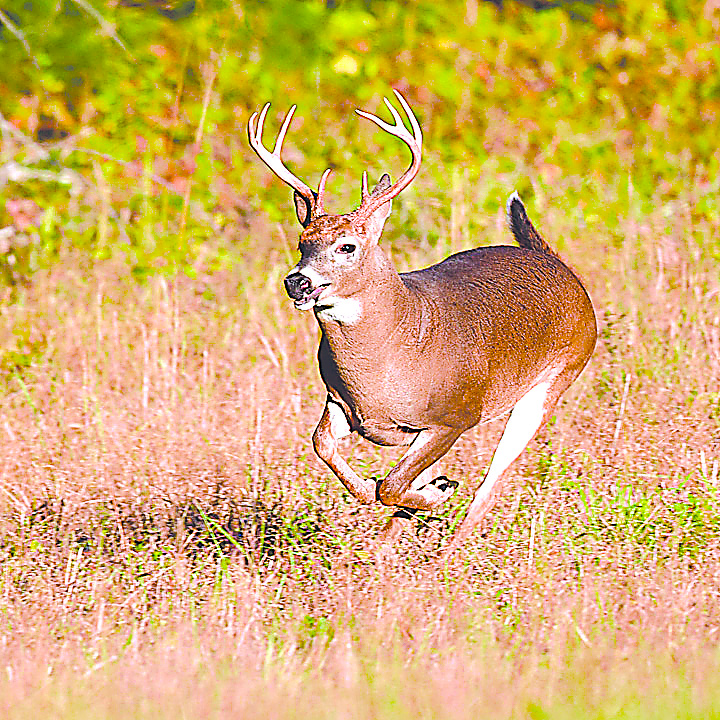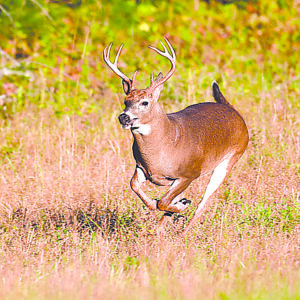Southeast Ohio deer deaths likely linked to disease
Multiple animals reported in Coolville

Photo courtesy of the Ohio Division of Wildlife White-tailed deer are common in Ohio, but in some parts of the state they appear to be suffering from epizootic hemorrhagic disease.
COOLVILLE, Ohio — Coolville residents are concerned about a significant number of deer dying in the area.
A representative of the Ohio Department of Natural Resources last week confirmed one positive case of epizootic hemorrhagic disease in Athens County. Another test from a deer found in Washington County is pending.
According to the Ohio Department of Natural Resources website, EHD is fatal to deer and there is no known treatment for it in wild populations. Afflicted animals are likely to die within three days after showing symptoms, which can include a fever; swelling of the head, neck, tongue and eyelids; disorientation and respiratory distress.
Daniel Banura is a Coolville resident and avid hunter. He said on Thursday afternoon that he has seen up to 15 dead deer on his property since July 15, but there may be even more due to the strength of the smell.
“I took a drive around and started finding them everywhere. All fresh,” Banura said. “I smelled so many of them last week. It’s like every 200 yards, it’s like, ‘Oh, there’s another.'”
EHD is transmitted by insects called “biting midges,” which can be found commonly around areas of water. However, Banura said none of the deer on his property were found dead near water, which is abnormal behavior for deer with the disease.
“Every deer has been on ridge tops, in the field,” Banura said. “I got multiple creeks and rivers on my property.”
Banura said EHD usually starts to appear in deer in the middle of August and lasts until frost, which is why it came as a shock that he found the deer so early in the season and in such large numbers.
Lindsay Rist, wildlife communications specialist with the Ohio Division of Wildlife, said the disease does tend to show up later in the summer, often in drought conditions.
“It is slightly surprising this year,” she said.
The number of reported deer deaths in Athens and Washington counties was not immediately available, but Rist said the division had received a number of reports.
On Monday, Rist told The Times Leader via email that there have been no confirmed cases of EHD in Belmont, Monroe, Jefferson or Harrison counties this year.
“At this time there are not any confirmed cases in those counties,” she wrote. “The majority of reports have been isolated to the area of eastern Athens County and western Washington County, and the only confirmation is in Athens County. The results from Washington County should be available within the week.
“This is earlier in the season than is typical for reports and/or confirmation of EHD,” she added. “Statewide updates usually don’t start until the end of August.”
People are encouraged to report their sightings of dead deer and/or suspected cases of EHD. Anyone can report their sightings through an online portal.
Banura said he got to know and identify the deer on his property over the years he’s spent in Coolville, and it has been devastating to see the situation play out.
“That’s the whole reason I bought this place. I spent tens of thousands yearly feeding and managing. I do so much just for these animals, and it wiped out the next 10 years for me all in a week,” Banura said. “I just feel depressed and disgusted.”
ODNR says that EHD does not affect humans or the safety of consumed venison, but since a specific illness in a deer cannot be determined without testing, they urge people to be cautious and not kill and eat sick deer.
More information about EHD can be found at ohiodnr.gov. To report a deer behaving abnormally, call ODNR at 1-800-WILDLIFE (945-3543).
Evan Bevins and Jennifer Compston-Strough contributed to this report.





